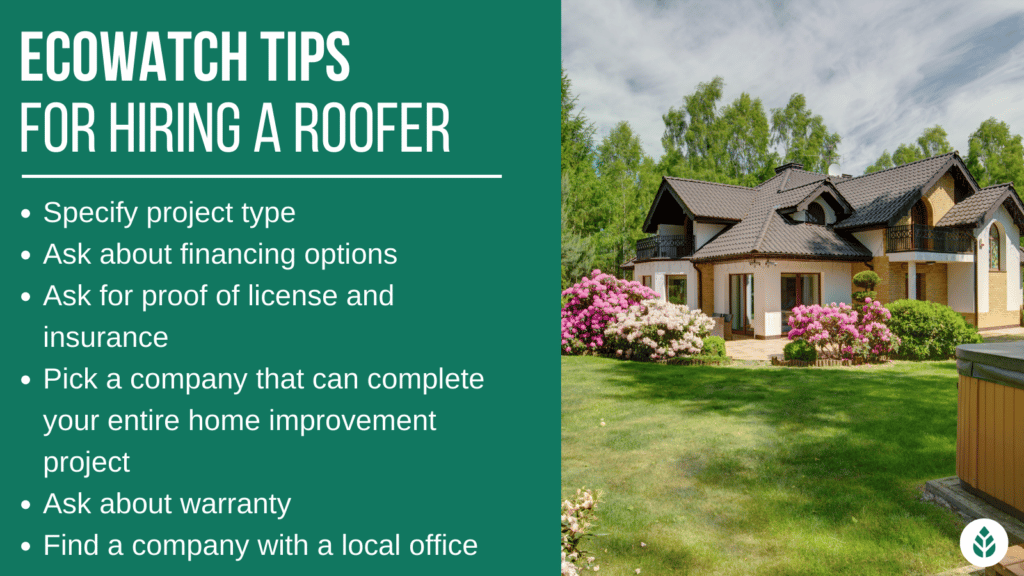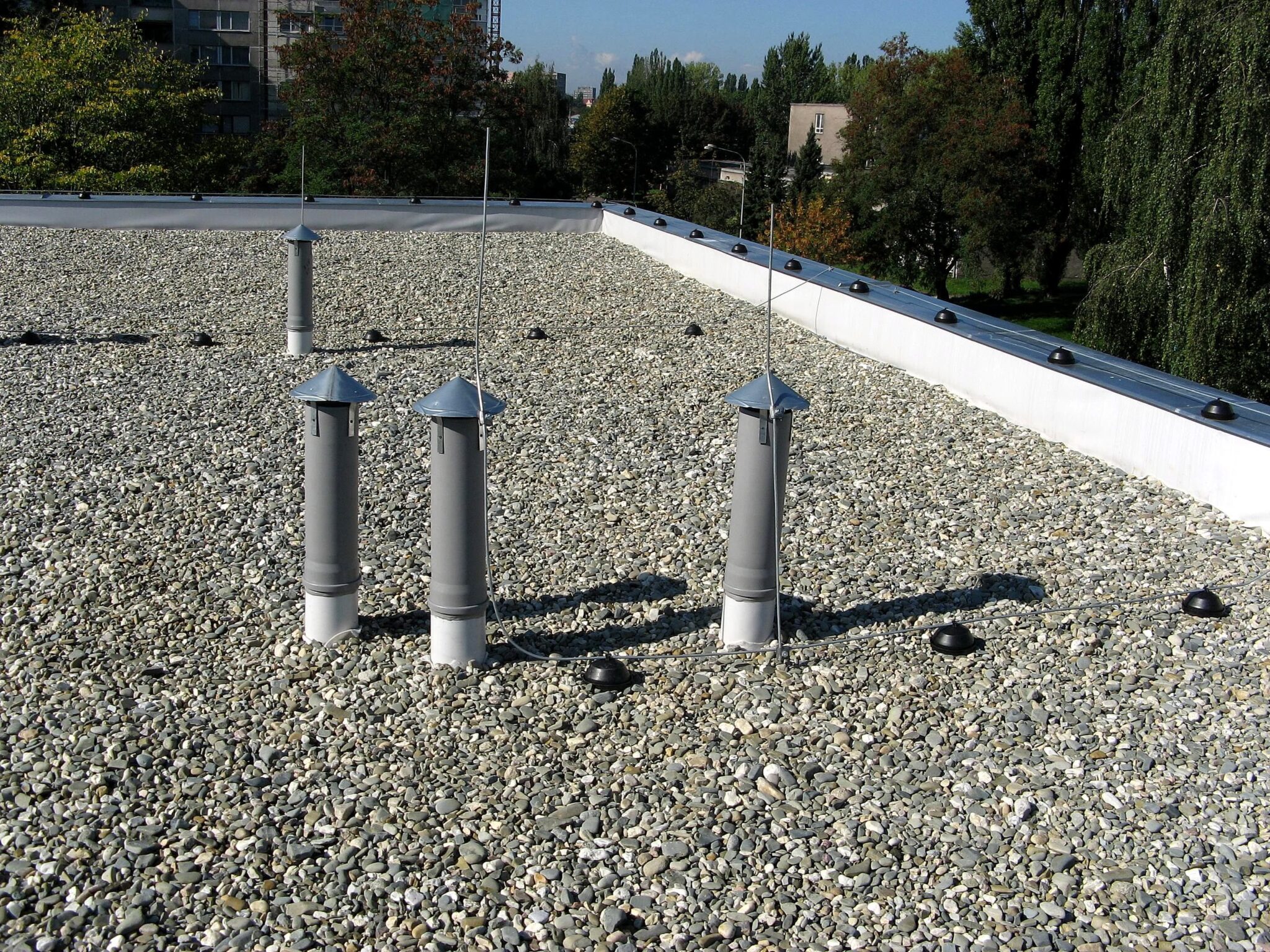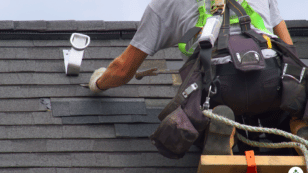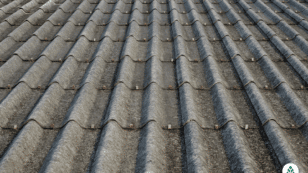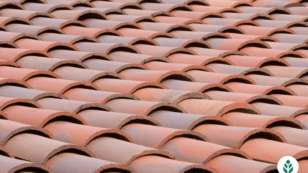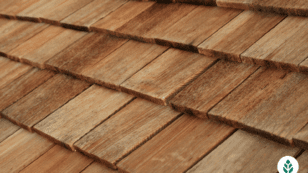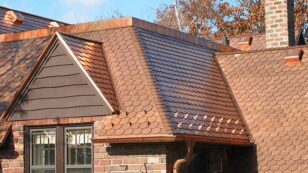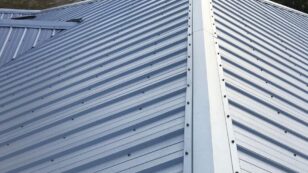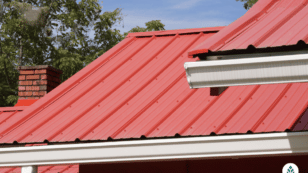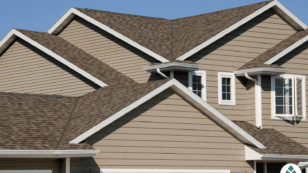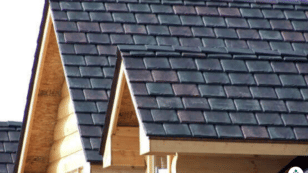
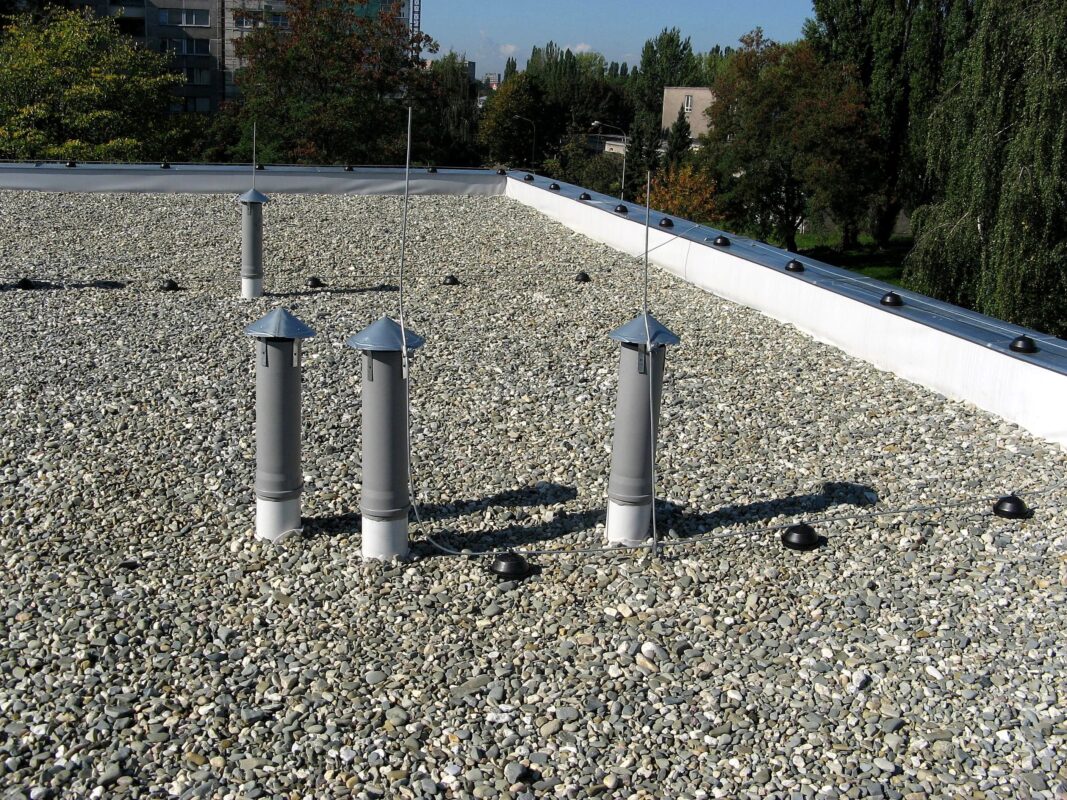
Tar and Gravel Roof Cost and Homeowners Guide (2024)
Average Tar and Gravel Roof Cost: $3,400 – $6,800
- Tar and gravel roofs are durable and can withstand all types of weather
- Gravel is an energy-efficient roofing material, able to release heat
- It costs $2 to $4 per square foot for tar and gravel roof installation
Each product and or company featured here has been independently selected by the writer. You can learn more about our review methodology here. If you make a purchase using the links included, we may earn commission.
Tar and gravel roofs used to be a popular choice for residential and commercial buildings, although they’ve started to become less common thanks to newer technology and materials. If you have a house with a low-sloped or flat roof, tar and gravel may be a viable roof replacement option for you.
Sometimes called built-up or BUR roofs, tar and gravel roofs are affordable and last 25 years on average but up to 30 years with proper maintenance. They’re also weather and fire resistant.
BUR roofs are similar to asphalt shingles in material makeup. They use asphalt-based sheets, hot tar and roofing felt as a base. While these are not great environmental choices, a top layer of gravel keeps the roof protected against UV rays while also making your home more energy efficient.
If you’re looking to add solar panels to your roof, you should know that tar and gravel roofs can be quite heavy. Additional braces and reinforcements may be necessary to ensure your home can support the weight of your roof with solar panels.
Cost of Installing a Tar and Gravel Roof
Installing a tar and gravel roof can cost between $3,400 and $6,800 for the average U.S. roof of 1,700 square feet. That breaks down to roughly $2 to $4 per square foot of roof surface.
Aside from the size, the cost will factor in your roof’s pitch, slope and layout. Where you live may also impact the price tag for your tar and gravel roof because of varying labor costs and material availability.
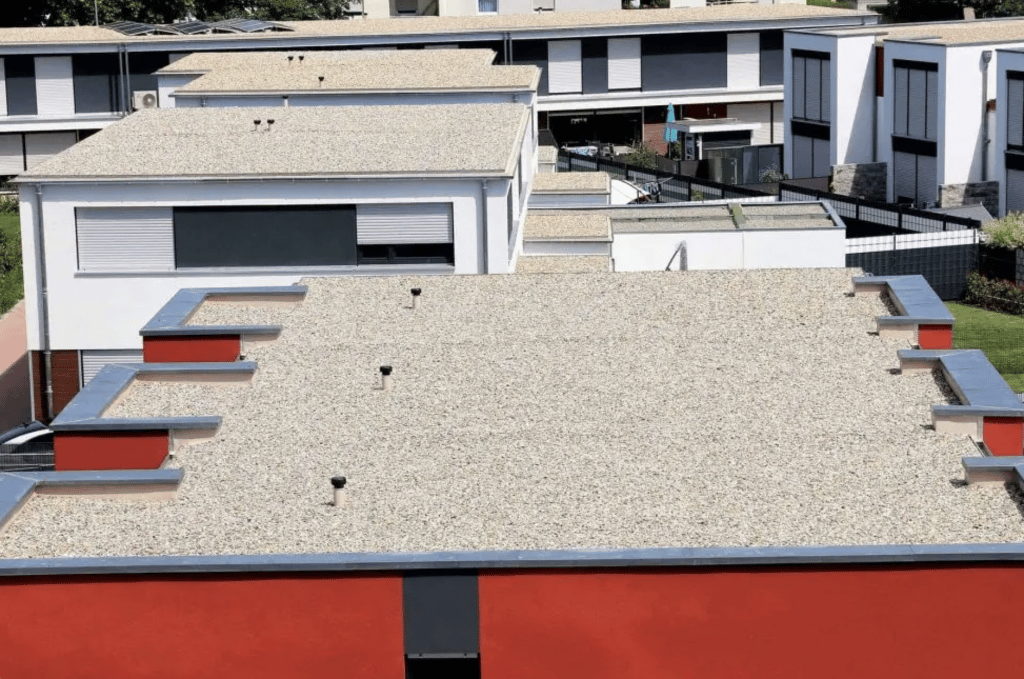
How to Calculate the Cost of Your New Tar and Gravel Roof
The good news is that you don’t have to guess how much you’ll pay for a tar and gravel roof. You can get a free estimate from a professional roofing company right now.
But if you’d rather do some math to calculate the cost of your new roof, here’s what you’ll need to do:
- Find out the square footage of your roof
- Multiply the size of your roof by $2 to $4 to get the material cost for your tar and gravel roof
Roofing cost estimate = roof size x tar and gravel material cost per square foot
Remember this is just a rough estimate and may not include costs for labor and some materials. It’s best to get a quote from one of the top roofing companies near you. And the best part is there’s absolutely no commitment — just free information!
Read on to learn more about tar and gravel roofing. If you’d rather skip the reading and get connected with one of the best roofing companies, click one of the links below.

Power Home

Average cost
Pros
- Positive industry reputation
- Lifetime or lengthy warranty
- 10+ years of experience
- Positive customer reviews
- Uses eco-friendly materials
- Well-trained, certified installers
- Variety of roofing styles available
Cons
- Limited variety of roofing materials
- Short or nonexistent warranty
- No financing information available
- Expensive
- Little information available on company website

Erie Home
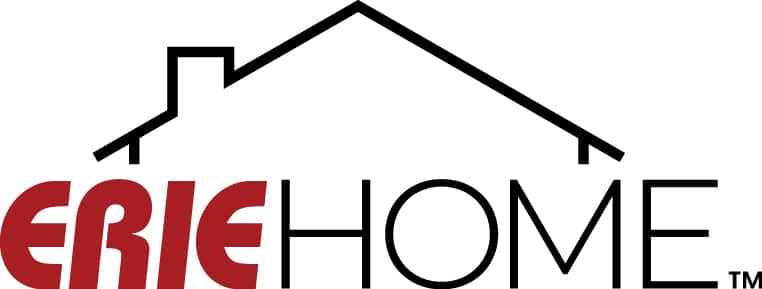
Zero Down - 18 months same as cash with minimum monthly payment
Average cost
Pros
- Lifetime or lengthy warranty
- Widespread availability
- 10+ years of experience
- Positive customer reviews
- Uses eco-friendly materials
- Financing options available
- Well-trained, certified installers
- Uses durable materials meant to last
- Variety of roofing styles available
Cons
- Limited variety of roofing materials
- Expensive

Aspen Contracting

Average cost
Pros
- Positive industry reputation
- Lifetime or lengthy warranty
- Widespread availability
- 10+ years of experience
- Positive customer reviews
- Financing options available
Cons
- Little information available on company website
Pricing Factors for Tar and Gravel Roofs
Tar and gravel is one of the more affordable roofing options out there. But if you’re shelling out $3,000 to $7,000 for a new roof, you probably want to know exactly what you’re paying for.
Let’s look at some of the pricing factors your roofing contractor will be considering when estimating the cost of your new roof.
Material Pricing for Tar and Gravel Roofs
Tar and gravel roofs are made up of three to five layers of laminated asphalt-based sheets, hot tar, roofing felt and gravel. Sometimes there’s extra mineral coating as well.
There are typically two types of tar and gravel roofing systems:
- Modified bitumen roofs: a mix of asphalt and rubber with a layer of gravel on top
- Ballast roofing: a single-ply roofing system with larger gravel applied on top
Each type of roof and associated materials has its own price range, so the cost of your tar and gravel installation will increase or decrease depending on which materials you choose, how many layers of roofing material are needed, and other factors.
Basic Labor Cost and Time to Complete Tar and Gravel roof installation
Labor and installation costs for a tar and gravel roof will look different based on where you live and what your roof looks like.
BUR installation jobs are completed within two to four days depending on the size of the roof and how many roofers are working. The material needs to be mixed on-site.
You can expect an hourly labor rate with a roofing job, so a smaller roof will save you on both material and labor costs, while a bigger roof can increase the price.
Removing Your Current Roof and Dump Fees
Unless you’re building a new home or structure, you’re going to have to have your old roof removed before re-roofing with your tar and gravel roof project. And removing a roof isn’t going to be free.
The roof removal process looks different depending on the type of roofing material of your existing roof, but expect a roof removal to raise your total installation project cost by about $1,000. The average cost of roof removal ranges between $1 and $5 per square foot.
Size and Complexity of Your Roof
Tar and gravel is a popular commercial roofing option because it only works on flat or low-sloped roofs. That said, you won’t have to worry about additional labor fees for a steep-pitched roof or risky installation.
However, having a lot of obstructions on your roof (think chimneys, HVAC systems, skylight windows), can make the tar and gravel layering more difficult, which may lead to higher installation costs.
Pros and Cons of Installing Tar and Gravel Roofs
Tar and gravel roofs are much more affordable compared to metal or tile roofs, but are they the best roofing option?
For commercial buildings, tar and gravel roofs have mostly been replaced by TPO (thermoplastic polyolefin) roofs or PVC-based roofing materials. TPO roofs have a thin rubber-like single-ply roofing membrane and perform better than tar and gravel roofs, despite being a cheaper alternative.
Let’s look at some advantages and disadvantages of installing a tar and gravel roof.
| Pros of a Tar & Gravel Roof | Cons of a Tar & Gravel Roof |
|
|
You can reach out to these recommended roofing companies to get advice on the best roofing material for your home, as well as free quotes for each material.
Lifetime and Durability of Tar and Gravel Roofs
Tar and gravel roofs last 25 years on average, but their life expectancy can be anywhere between 10 and 30 years.
Think about it this way — if you installed a tar and gravel roof and your neighbor got a metal roof, you’d probably have to replace your roof twice while they’d still have their original roof intact.
Double that to four roof replacements if they opted for a copper roof!
While tar and gravel roofs are pretty durable and perform well against hail, UV rays, wind and falling debris, their component materials make them highly prone to leaks.
Tar and gravel is not a good choice for climates with a lot of rainfall, extreme heat or humidity. While the light-colored top layer of gravel has high solar reflectance, strong sunshine can cause the tar underlayment to soften.
Are Tar and Gravel Roofs Environmentally Friendly?
Definitely not. The only environmental benefit of a tar and gravel roof is high energy efficiency.
A tar and gravel roof is made up of tar, felt and gravel, and sometimes layers of fiberglass. None of these materials is recyclable. Plus, the shorter lifespan of a tar and gravel roof makes it more wasteful and means more of these toxic materials will need to be produced.
Tar and gravel roofs have mostly been replaced by TPO roofs or PVC-based roofing materials, which aren’t always the most sustainable solutions, but they are at least recyclable in most cases.
TPO roofs have a thin rubber-like single-ply roofing membrane and last longer than tar and gravel roofs as well, despite being a cheaper alternative.
If you have the option, we suggest opting for a metal roof instead.
Financing Your New Tar and Gravel Roof
Tar and gravel may be one of the most affordable roofing options, but that doesn’t mean it’s cheap — especially if you have a large roofing project.
Fortunately, roofing companies often offer in-house or third-party loans to finance your new roof. Your contractor may have a preferred method of payment, but you can also explore the following options to pay for your new tar and gravel roof:
- Cash
- Bank loan (home improvement loan)
- Home equity loan
- Home equity line of credit
- Cash-out refinance
- FHA loan
- Credit card
Also, talk to your home insurance provider to see if installing a tar and gravel roof makes you eligible for any discounts. While insurance discounts typically only apply to metal roofs, it never hurts to ask.
The ROI of Your Tar and Gravel Roof
A tar and gravel roof has a good return on investment because it’s cheap to install and can last up to 30 years if properly maintained and repaired.
Additionally, the National Association of the Remodeling Industry (NARI) reports that a new roof is one of the top return on investment projects with an estimated 100% cost recovered at resale.1
Costs of Maintenance and Repairs for Tar and Gravel Roofs
If you want your tar and gravel roof to last as long as possible, you’ll need to have it regularly inspected, maintained and repaired. Make sure you arrange for this during your warranty period and you’ll probably be able to get discounts on your roof repair and maintenance costs.
Maintenance for tar and gravel roofs usually involves adding roofing layers and sealants for protection and increased insulation. These layers are typically made from fiberglass, foam or some type of acrylic or elastomeric coating similar to what you’d see on a foam roof.
The most common gravel roof repair is fixing a leak or strengthening areas that have signs of cracking, discoloration, blistering or other deterioration to the roof membrane.
Fortunately, tar and gravel roofs can easily be repaired, but it’s a job best left to professionals. On average, roof repairs cost somewhere around $1,000, but they can vary from a few hundred dollars to upwards of $7,000 depending on the extent of the damage.
If you have had more than 25% of your tar and gravel roof patched up, experts recommend replacing your roof.
Costs of Cleaning Your Tar and Gravel Roof
Having your roof cleaned regularly can help extend its life, which is especially important with the rather short-lived tar and gravel roof.
The most common roof cleaning you’ll need to do involves removing moss from the roof. If left untreated, moss can cause significant damage and cause roof leaks.
Manual moss roof removal costs around $1,200 or between $0.60 and $1.00 per square foot of surface. Prices may be lower or higher depending on the roofing company you choose and its preferred cleaning method.
You should also keep an eye out for loose gravel that can easily clog your gutters. It may be worth investing in gutter guards to keep your gutters protected.
Are Tar and Gravel Roofs Worth the Cost?
Many people find that tar and gravel roofs are worth the cost because they’re inexpensive and last a decent amount of time.
However, we think there are far better roofing materials for home and business owners, and certainly ones that are better for the environment.
If you’re looking for a quick and cheap roofing solution for a flat roof, you may want to consider TPO roofing. But you’ll get a much bigger return on your investment if you go for a long-lasting material like metal, tile or slate roofing.
FAQ: Tar and Gravel Roof
Tar and gravel roofs are a good quick and cheap roof solution, but they only last an average of 25 years and may last as little as 10 years depending on your climate. If you live in a suitable area, you may find a tar and gravel roof is a good investment, but there’s a reason they’re being phased out in favor of other roofing materials.
It can be a little complicated installing solar panels on a tar and gravel roof, mainly because of the weight. Tar and gravel roofs are one of the heaviest roofing options and a solar panel system will only add to that weight. You’ll likely need to install braces for reinforcement.
A tar and gravel roof lasts 25 years on average but can last as little as 10 years if not maintained or up to 30 years with proper maintenance.

 233k
233k  41k
41k  Subscribe
Subscribe 
